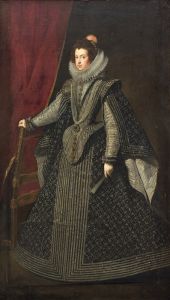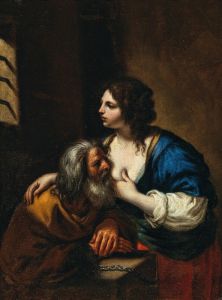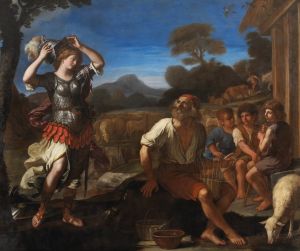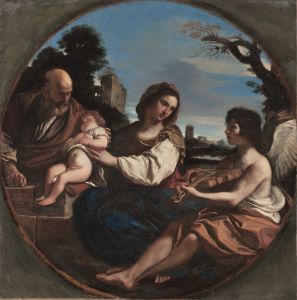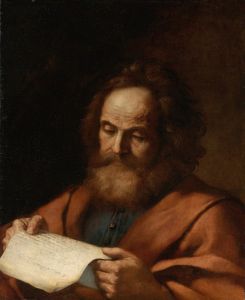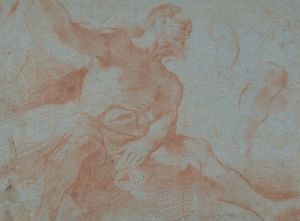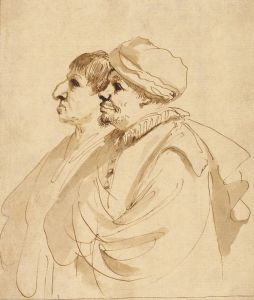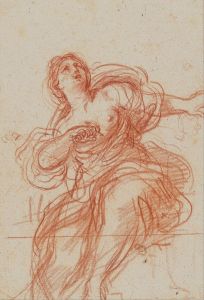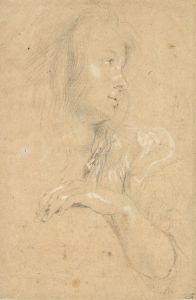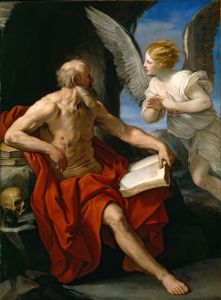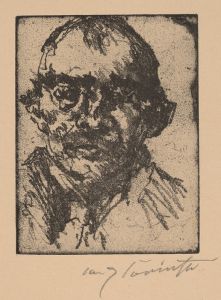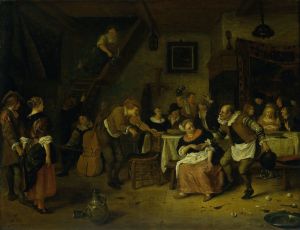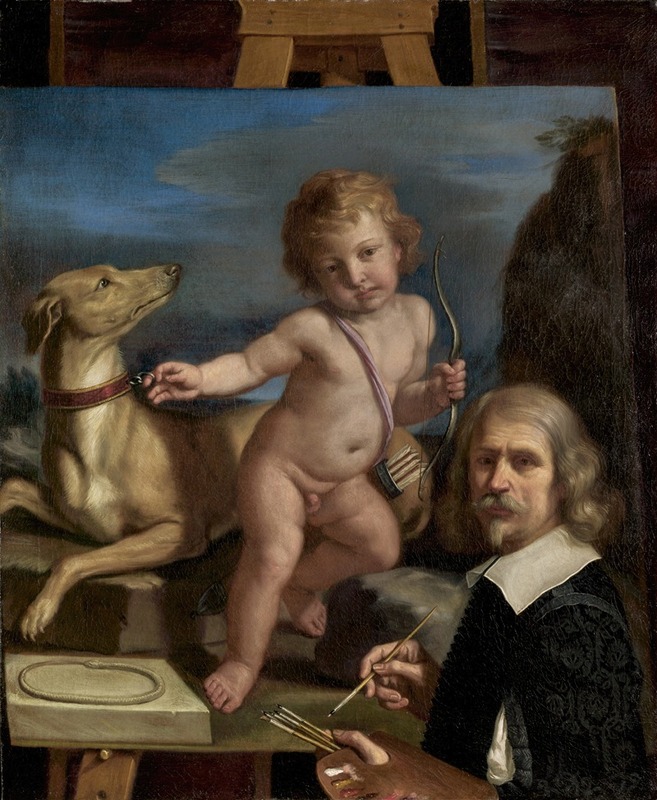
Self-Portrait before a Painting of Amor Fedele
A hand-painted replica of Guercino’s masterpiece Self-Portrait before a Painting of Amor Fedele, meticulously crafted by professional artists to capture the true essence of the original. Each piece is created with museum-quality canvas and rare mineral pigments, carefully painted by experienced artists with delicate brushstrokes and rich, layered colors to perfectly recreate the texture of the original artwork. Unlike machine-printed reproductions, this hand-painted version brings the painting to life, infused with the artist’s emotions and skill in every stroke. Whether for personal collection or home decoration, it instantly elevates the artistic atmosphere of any space.
Self-Portrait before a Painting of Amor Fedele is a work by the Italian Baroque painter Giovanni Francesco Barbieri, better known as Guercino (1591–1666). This painting is a self-portrait of the artist, which is notable for its inclusion of another artwork within the composition—a depiction of "Amor Fedele" (Faithful Love). The piece is an example of Guercino's skill in combining portraiture with allegorical and symbolic elements, a hallmark of Baroque art.
The painting portrays Guercino himself standing before an easel, where the image of "Amor Fedele" is partially visible. The figure of "Amor Fedele" is typically interpreted as a representation of fidelity and enduring love, a theme that was popular in the art and literature of the 17th century. Guercino's inclusion of this subject within his self-portrait may reflect his interest in allegory and his engagement with intellectual and cultural themes of his time.
Guercino's self-portrait demonstrates his mastery of chiaroscuro, the dramatic use of light and shadow that was a defining feature of Baroque painting. The artist's face and hands are illuminated, drawing attention to his identity and his role as a creator. The painting also showcases his ability to render textures and details, such as the folds of fabric and the surface of the easel.
The exact date of the painting is not definitively known, but it is generally attributed to the mid-17th century, during the mature phase of Guercino's career. By this time, Guercino had established himself as one of the leading painters of his era, known for his dynamic compositions and expressive use of color and light.
The painting is housed in the Galleria Nazionale d'Arte Antica in Palazzo Barberini, Rome, where it remains an important example of Guercino's work. It is often studied for its insight into the artist's self-perception and his engagement with the artistic and cultural currents of his time.
No further detailed information about the circumstances of the painting's commission or its early provenance is available. As with many works from this period, the lack of comprehensive documentation leaves certain aspects of its history open to interpretation. However, the painting's artistic quality and its place within Guercino's oeuvre make it a significant piece in the study of Baroque art.





